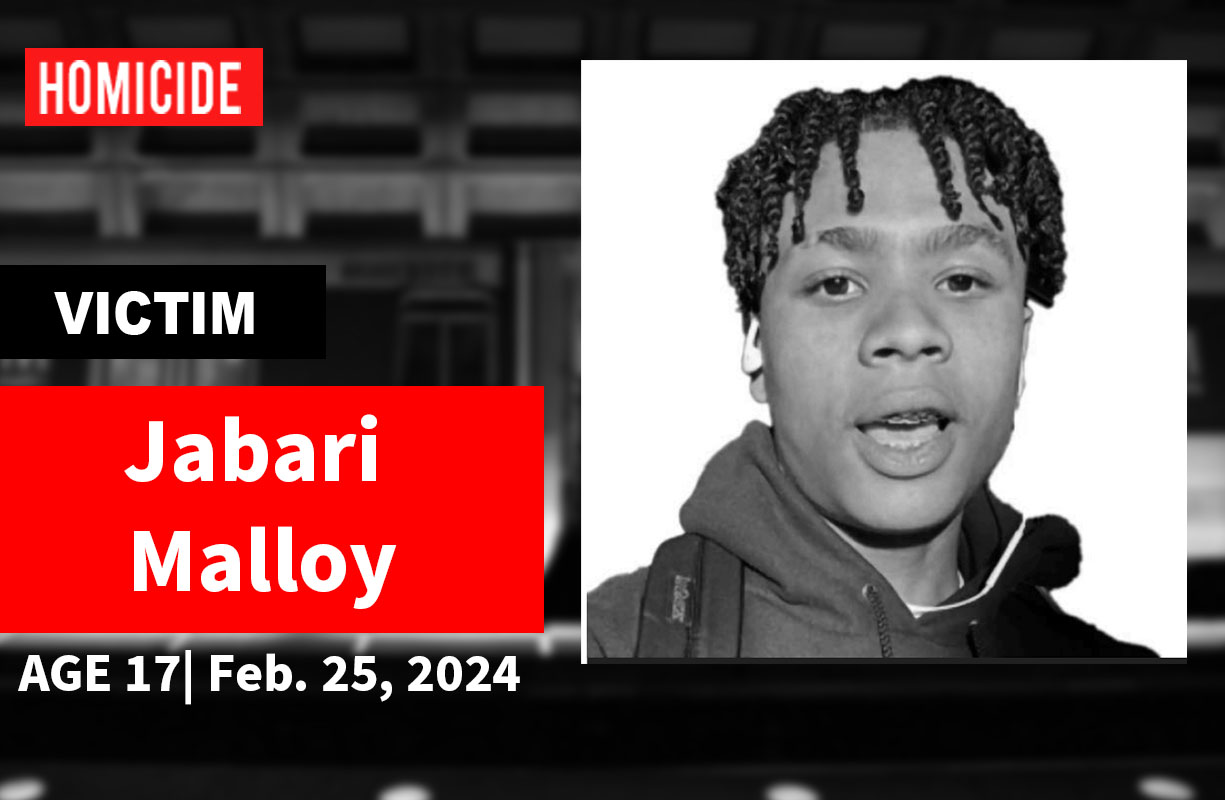
Thank you for reading D.C. Witness. Help us continue our mission into 2024.
Donate NowBy
Joseph Pellegrini [former]
- April 5, 2024
Homicides
|
Shooting
|
On April 4, DC Superior Court Judge Michael O’Keefe heard from police witness and reviewed surveillance footage evidence in a first degree murder trial.
Rico Antjuan Parker, 42, is charged with first-degree murder while armed for his alleged involvement in the fatal shooting of Jabari Malloy, 17, in an alleyway on the 700 block of Lamont Street, NW on February 25.
According to court documents, officers were dispatched to the location due to a ShotSpotter alert for two gunshots. When they arrived, they found Malloy unconscious at the rear of an alley behind Lamont Street, NW. They began CPR until DC Fire and EMS arrived, and despite all life saving efforts, he succumbed to his injuries.
The prosecution called the lead detective with the Metropolitan Police Department (MPD) who showed a surveillance video from the night of the incident, which depicted an individual, later identified as Parker, fleeing an alleyway after the gunshots were heard. The detective positively identified the exact location of the camera and the murder based on the video.
Parker’s defense attorney, David Akulian, began cross examination by showing a separate video of the alleyway, in which he identified one potential point of entry to the alley other than the two points identified by the detective. They pointed out that there is no video footage from the houses further down the alley.
Akulian also questioned the detective about details in the affidavit of the case
According to the document, Parker posted an Instagram story about him and his father 22 hours after the murder. The detective stated that this was likely a cover-up story for the shooting, as his father stated that Parker did not come to his residence when he claimed he did.
Then Akulian questioned the detective about discrepancies between witness testimonies. He argued that certain witnesses gave biased and character-based statements against Parker. In one example, a witness described Parker as “not a good person” and alleged that he made threatening statements against another witness.
However, the witness recanted this allegation. The detective stated that this was because the witness, a close friend of Parker, was in denial about the murder and did not want to believe Parker committed it.
The detective told the court that this witness told them in an interview that they believe Parker should be punished “by the courts, and not by the streets.”
According to Akulian, when Parker arrived at a MPD station to clear his name two days after Malloy was shot, he waived his Miranda Rights and participated in an interview with officers.
However, following the interview, officers seized Parker’s phone as evidence. He argued this violated Parker’s Fourth Amendment rights against illegal search and seizure, adding that officers were biased against Parker which tainted the affidavit.
The prosecution responded that even if there was a violation of the Fourth Amendment, there is no probable connection with bias against Parker.
The detective stated that he was not present during Parker’s interview, but he did prepare the arrest warrant based on the audio recording that was taped by MPD officers.
Akulian then argued that the police could not corroborate Parker’s phone’s GPS data with the scene of the crime. This was relevant because Parker had been sharing his location with one of the witnesses.
The defense pointed out that Parker’s location was recorded by the witness at an Exxon gas station on Ridge Road for about 30 minutes, but there was no surveillance footage of either Parker or his vehicle to verify that he was present at that location.
The detective stated that he did not know what he was looking for when he reviewed the gas station footage, and he did not know why the witness’ phone located Parker’s phone at the gas station.
Akulian argued the inconsistency of reports on the color of Parker’s vehicle, which was reported to be “grayish/greenish” in the affidavit. However, the prosecution described the car as “silvery green.” He claims the car is simply silver.
Because of this difference in reporting, Akulian argued that there is a possibility that the person who shot Malloy might not have been Parker at all.
However, Judge O’Keefe said this was irrelevant, as there was no real indication that there were two separate vehicles of the same make and model with different colors involved in the crime.
Ultimately, the prosecution concluded there was about “20 minutes of continuous footage” showing Parker and Malloy parking their car, walking into the alley, Parker shooting Malloy, fleeing the scene, and finally driving away.
They and the detective on the stand determined that it was only Parker and Malloy in the alley at the time of the murder, and there was no third party involved.
Conversely, Akulian argued that because there was no way of knowing whether it was Parker in the alley with Malloy, there was no known motive, and there was no GPS data, it could have been a third party who committed the murder.
Judge O’Keefe decided to delay the probable cause ruling in order to review the evidence and arguments.
Parties are slated to return April 12 for a ruling on probable cause.
Follow this case